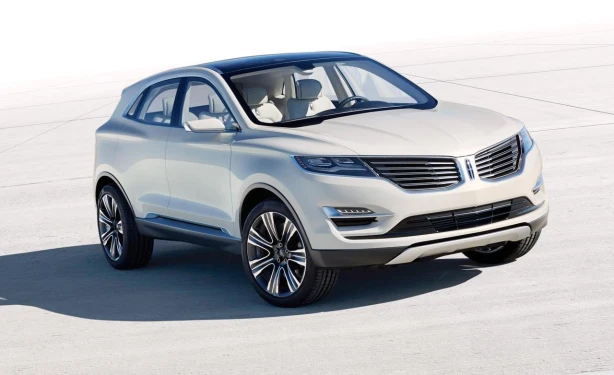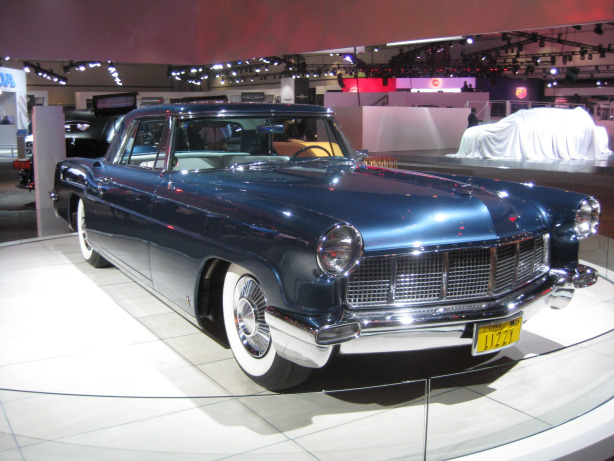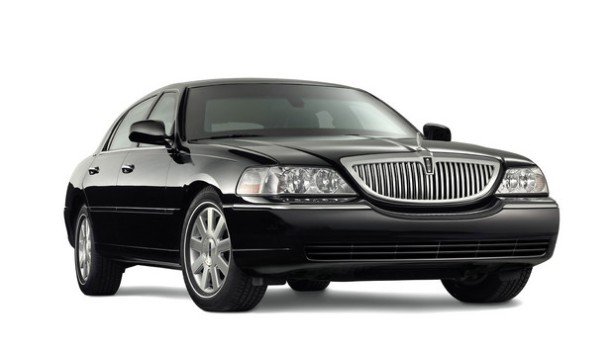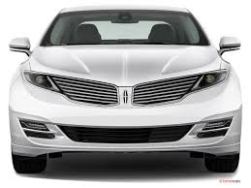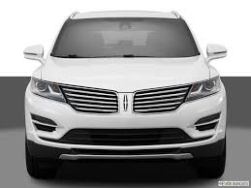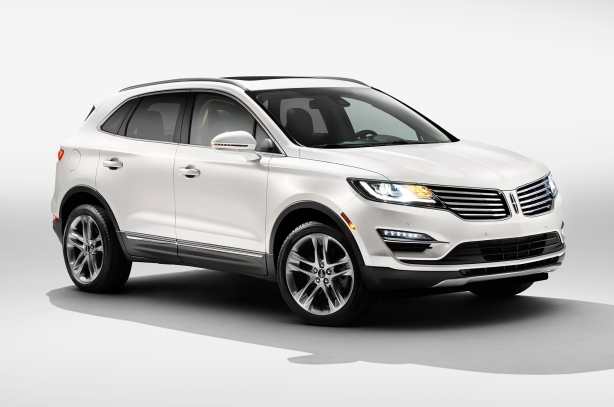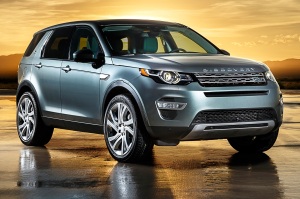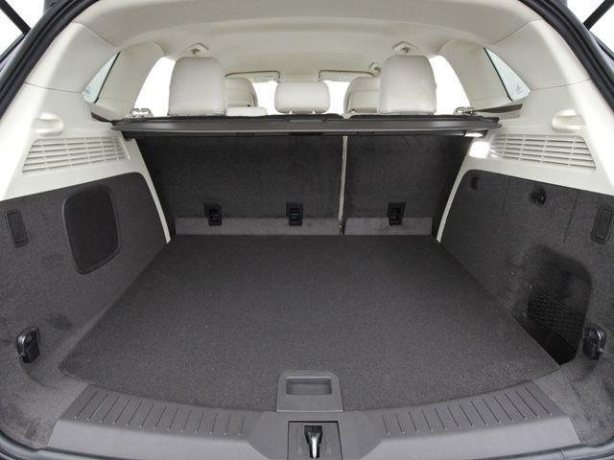Ford decided to spend billions revitalizing its 3-wheels-in-the-grave Lincoln luxury brand. It’s first “premium” product was the MKZ, a fancy version of the Ford Fusion. Its next big product, introduced in 2014 as a 2015 model, was the MKC, a completely re-worked version of Ford’s the very popular Escape compact crossover.

2015 Ford Escape. The MKC shares a platform and powertrains with the Escape. The interior and sheet metal is all unique to the MKC.
Compact crossovers are a very hot segment of the market. Products like the Honda CR-V, Toyota RAV4, Kia Sportage, Subaru Forester, Nissan Rogue and Ford Escape sell well over 2 million units a year in the U.S. market. The premium segment is equally hot with entries like the Acura RDX, BMW X3, Audi Q5, Porsche Macan and Mercedes ML all sucking up huge sales volumes and gigantic profits.
So when Lincoln introduced the all-new MKC, it knew it could attract some attention.
But first, let’s step back and try to figure out what a Lincoln is in the 21st Century. Lincoln has been defined by its big sedans for decades. The image of a 1960s era Continental with suicide doors was indelibly seared into our collective consciousness with the November 22, 1963 assassination of President John F. Kennedy, who was riding in the back of a 1961 Lincoln Continental Convertible that fateful day in Dallas.
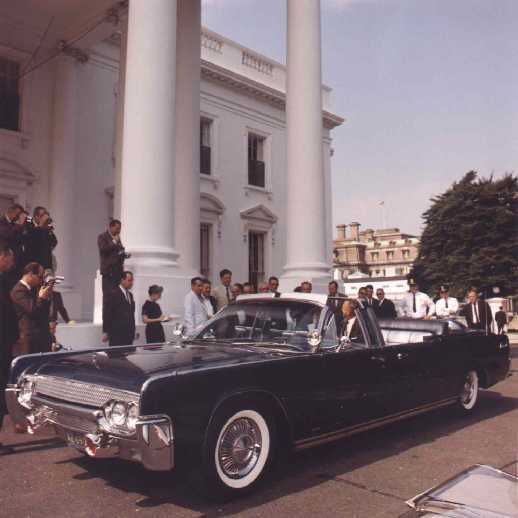
1961 Lincoln Continental Presidential Parade Car dubbed USSS or “SS 100 X.” The SS stands for Secret Service.
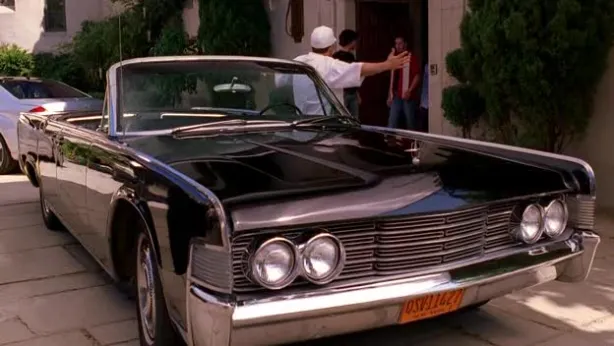
The younger audience may remember the 1965 Lincoln Continental Convertible used in the hit HBO show Entourage.
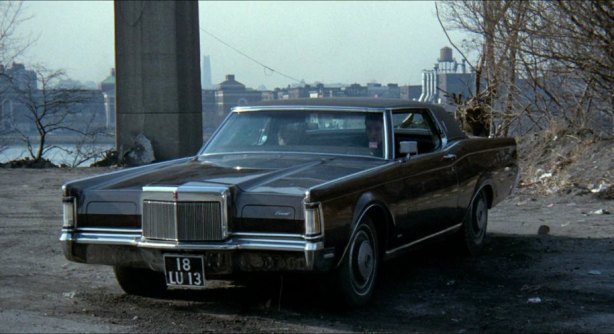
Maybe classic movie buffs will remember the 1970 Lincoln Continental Mark III that was integral to the cop thriller The French Connection.
But like Cadillac, Lincoln seemed to lose its way over the remaining decades of the 20th Century. In the end, it was really only one sedan, the Lincoln Town Car, that was synonymous with Lincoln. In fact, when you ordered car service, the term Town Car became a generic name for a big black sedan to ferry you to and from the airport. Ford really showed little interest in updating any Lincoln. By the time the Town Car was finally retired, it had been in service for nearly 30 years with only minor cosmetic and mechanical upgrades.
During The Great Recession, Ford even considered shuttering Lincoln as it had done to Mercury, which itself had become the redheaded stepchild no one wanted. A Mercury had become a rebadged Ford with only tiny changes to call it a Mercury. Lincoln was essentially the same thing, starved for product, with slashed development and marketing budgets and all but ignored by customers as its sales sank to new lows.
So it was a pleasant surprise that Ford decided to invest a few billion in Lincoln and try to revive sales with fresh product and flashy designs. But even with all the new investment, can the average consumer really quantify or identify a modern Lincoln? I don’t think so. Either you’re like me and wax nostalgic for a rear-drive flagship called Continental (hint: Lincoln could build one on the new 2015 Mustang rear drive platform) or you simply don’t care because you’ve only owned foreign cars since you were born. Nevertheless, Lincoln presses on.
The winged Zephyr grille – billed as the new face of Lincoln — is more successful on the MKZ than the sad-sack wavy brace-face gaudy grille of the Navigator. But I think the most successful integration of the new face of Lincoln is on this all-new 2015 MKC. The grille flows effortlessly into the headlamp assembly. A smooth line of ice-white LED running lights seamlessly complete the wingtips of the grille.

The winged grille was grafted onto the front of a Lincoln Navigator. Not much else was done. It don’t think it’s nearly as successful here.
The MKC’s sheet metal is drawn taughtly over its skeleton. Deep scallops give dimension to the sides and a spear-like crease darts over the bulging fenders. Large wheels (18″ standard or optional 19″ and 20″) fill the wheel wells adding to its substantial, planted look. The rear “clam shell tailgate” is an expensive upgrade to the more pedestrian version on the Ford Escape. In addition to a wider opening, the wraparound tailgate also allows for an unbroken applique of Lincoln’s signature full-width taillights in the form of a thin, artistic rendering of the front wings, except this time in red and white LEDs.
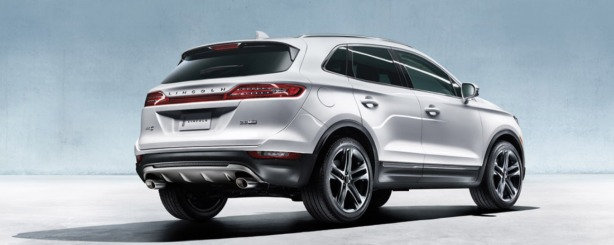
The rear is quite nicely rendered. The large clam-shell style tailgate is a nice tableaux for the designers.
The LED theme carries on at all touch and focal points on the MKC. Door handles light up, a thin slice of LEDs form turn signal repeaters embedded in the the side mirrors. Approach the car with the key in your pocket and LEDs beckon you forward, illuminate door handles and alerting you to the peril of puddles. Inside, the door panels, foot wells and dashboard all glow softly in tasteful warm-colored LEDs. It must be quite the light show at night, but even during the day, it was impressive.
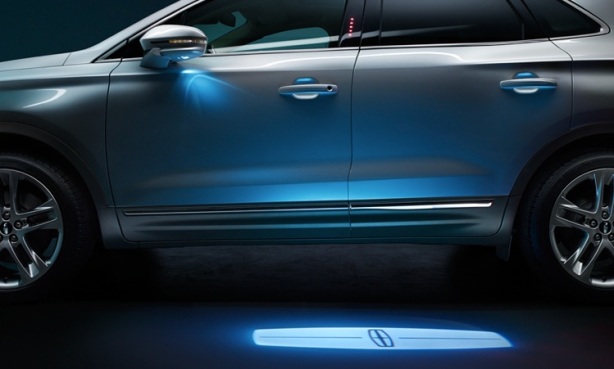
LEDs bathe the exterior in soft accent lighting. You’ve gotta love the puddle light that projects the Lincoln cross on the ground.
The MKC I drove was a fully-loaded all-wheel driver with the optional 2.3L Ecoboost turbocharged inline, direct-injected 4-cylinder engine making 285 hp and 305 lb-ft of torque. The only transmission is a 6-speed automatic. While I felt it had plenty of power to motivate it’s rather porky two tons, I was a bit disappointed Ford hasn’t gone to an 8- or 9-speed automatic used by “competitors” Audi and BMW. At this point, a 6-speed automatic in a “luxury” or “near-luxury” car feels a bit old school. Even Jeep is using a new ZF 9-speed automatic in its Cherokee – a car similar in size to the MKC. Downshifts brought loud howling from the engine which seemed sort of out of character from a very soothing and zen-looking car.
The fuel economy is also disappointing. The EPA rates the AWD 2.3L Ecoboost at 18/21/26 mpg (city/combined/highway). The car’s computer proclaimed 9.7 mpg! Of course, that is demonstration/dealer mpg, but still a bit shocking for a compact crossover. I have a feeling that you’d be lucky to get 18 mpg combined if you used this car for your daily drive in Los Angeles. But even if you opt for the entry level front-drive 2.0L Ecoboost, the EPA rates it at 20/23/29 mpg – not exactly class-leading fuel economy. By contrast, the 2015 Honda CR-V with Honda’s new 2.4L direct inject (non-turbo) engine and AWD is rated at 26/28/33 mpg – far better than the MKC. The Acura RDX – the “luxury” version of the CR-V – is rated at 19/22/27 mpg – but that’s with a 3.5L V6 engine! So the V6 AWD Acura RDX beats the vaunted “economy” of Ford’s 2.3L Ecoboost.

Lincoln’s marketing babble compares the MKC to the Audi Q5. It will be a while before Lincoln can play in Audi’s sand box.
Okay, I know, this is a near-luxury crossover, so playing the fuel economy game is only one fraction of the purchase equation. To my eye, the MKC is a lovely package, far easier on the senses than the angularly-awkward Acura RDX but quite likely equally as pleasing as the svelte Teutonic lines of the Audi Q5 – Lincoln’s stated Quixotic foil.
My sales associate informed me that they have had a few Audi Q5 customers trade in their Audis for the new MKC. While I don’t doubt his veracity, I don’t know how many Audi owners are going to cross shop with Lincoln – a struggling near-luxury brand. It’s taken Audi decades to prove its luxury-performance bona fides in the US market. I can see an Audi owner considering its corporate cousin, the Porsche Macan or more likely, offerings from fellow German rivals BMW and Mercedes. And no one is cross shopping anything German for the uncompetitive (and soon to be replaced) Cadillac SRX either.
Then there are two new beauty pageant entries: The gorgeous Land Rover Discovery Sport and the very pointy, but stylish Lexus NX, based on the Toyota RAV4 — although you’d never mistake the Lexus for the Toyota.
I found the MKC comfortable with plenty of seat adjustments as well as a power tilt/telescope steering column. There is a 2-position memory for the driver’s seat. The rear window is fairly narrow, so rear visibility isn’t the best, but with all the electronic driving aids like blind spot monitors, a back-up camera and back up sensors, it wasn’t a big deal. You sit fairly upright, perched high as you’d expect in an crossover, so forward visibility was great.

The interior is very nice with mostly soft-touch surfaces. It’s far more pleasing than the Ford Escape.
The electric power steering was well weighted, if numb. I did feel some road vibration come through the wheel when I wasn’t expecting it. Turning radius wasn’t the best, but it’s what’s expected with a front drive car. It’s definitely not a sporty Mustang, but for the target customer, it will be perfectly fine.
While you constantly feel the weight of the MKC, the 2.3L EcoBoost always felt capable of the task. I didn’t perceive much turbo lag either, and the throttle was well-weighted and with linear acceleration – no jack-rabbit starts or sudden bursts of unexpected power. I didn’t drive the smaller engine and I suspect it would feel taxed by the MKC’s heft. But for the vast majority of customers, they won’t notice or care. As long as it goes when they push the gas pedal and stops when they press the bakes, it will pass the test. In short, the MKC felt properly sorted, appropriately quiet and well dampened over rough roads. That’s a sure winning combination of traits.
The MyLincoln Touch infotainment system is as annoyingly complex as ever. However, on the MKC, Lincoln mercifully ditched the touch-pad sliding bars for volume and tuning and grafted on honest-to-god physical knobs for volume and tuning and physical push buttons for things like climate control and seat heaters. They look good and are easy to use. However, the center console fascia looks cheap and there are several hard-surface plastic panels below eye level. Two USB ports lurk in the console between the front seats, cup holders are well placed and of adequate size and the arm rest is comfortable. There are a bunch of very handy steering wheel mounted buttons for everything from the cruise control to the phone and tuning/volume control.

The touch-screen is large. The new physical knobs and switches are a welcome return to “analog” for Lincoln.
I love the heated and cooled seats and the “no hands” operation of the tailgate is very handy. Keyless entry and start is standard on all levels of the MKC as is Lincoln’s push button transmission. The push buttons are a little gimmicky, but you’d get used to them fast. There are paddle shifts for easy manual shifting when you need it. Another “wow” factor is the optional Panoramic Vista Roof with power shade. Touch one button and the cloth shade rolls back to let the sun or stars in. It really makes the interior feel much bigger and is quite impressive. I highly recommend it.
Unfortunately there are a few things that give me pause about the 2015 Lincoln MKC. Aside from the decidedly last-generation 6-speed automatic, the infotainment system is still the MyLincoln Touch – which, along with MyFord Touch has brought Ford’s Initial Quality Survey ratings down and receives withering criticism from Consumer Reports. It’s 4-quadrant touch-screen with small fonts is hard to read and use while moving. Just this month (January 2015), Ford announced at the 2015 Consumer Electronics Show that it’s killing these systems and will go to a much more simplified system called Sync 3, which looks an a lot like Chrysler’s far superior U-Connect system. We won’t see Sync 3 until 2016 model year cars appear. Then there is the adaptive cruise control which is a generation behind the current units. It still shuts off when the car dips below a set speed. The newest systems can bring the car to a full stop and then automatically follow when traffic starts to move again. Even if you were to lease the car for 3 years, you start with out-dated, frustrating tech from day one.
Lincoln has this new exclusive option package called Lincoln Black Label. I inspected an MKC Black Label sitting on the showroom floor. It sported the exclusive Black Tie paint and the “Center Stage” theme. The interior had a lovely leather double-stitched dash, Venetian black leather seats with Alcantara inserts, contrasting red stitching, matching door inserts, a beautiful black Alcantara headliner and exotic wood accents, including in the steering wheel. You also get complimentary maintenance (like BMW), so there are no maintenance costs during the 4-year, 50,000 mile factory warranty. If you don’t have the time to take your car in for service, the concierge will send a valet out to you, leave a loaner car and return your car when its finished, at your convenience. Whether or not you use the valet, a loner car is always free. Also included is “anytime” complimentary car washes and an annual detailing – a nice touch you wont find from any other car company. All these things make you feel pampered and do add value. But is it worth $6,000? On a Lincoln? I guess only time will tell, but I have to believe the take rate will be fairly low.

The interior of a 2015 Lincoln MKZ with the Black Label package. This “theme” is called Center Stage.
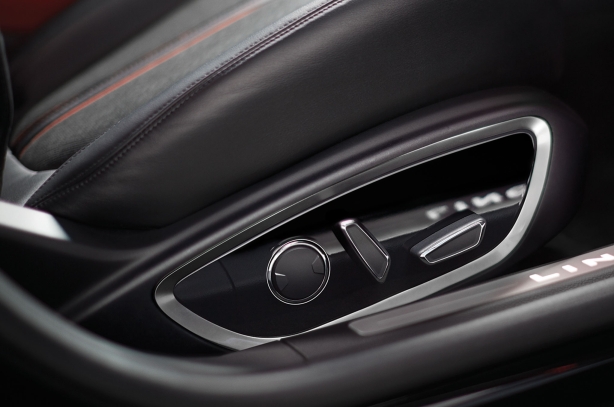
Details are important. Check out the upgraded switchgear and lighted kick plate for this Black Label MKC.
Finally we come to the price. The MKC 2.0 EcoBoost FWD starts at $33,995. A loaded MKC 2.3L EcoBoost AWD is an eye-popping $49,225. If you opt for the new exclusive Lincoln Black Label package, it’ll add another $6,000 to the sticker shock. The loaded MKC Black Label I saw on the showroom was over $55,000. This makes for some fuzzy new math. Is it worth paying top dollar for:
- Any Lincoln
- A CUV based on the decidedly mass-market Ford Escape
- Complex infotainment system, soon to be replaced
- Last-generation safety sensors, hardware and software
- Relatively poor fuel economy; no hybrid option
I’ve always been dyslexic, but no matter how I look at at the numbers, I don’t see a compelling case for anything other than the base MKC. Lincoln is going to have to find some very “affordable” Red Carpet lease payments to make the purchase of an MKC attractive enough for most buyers.
